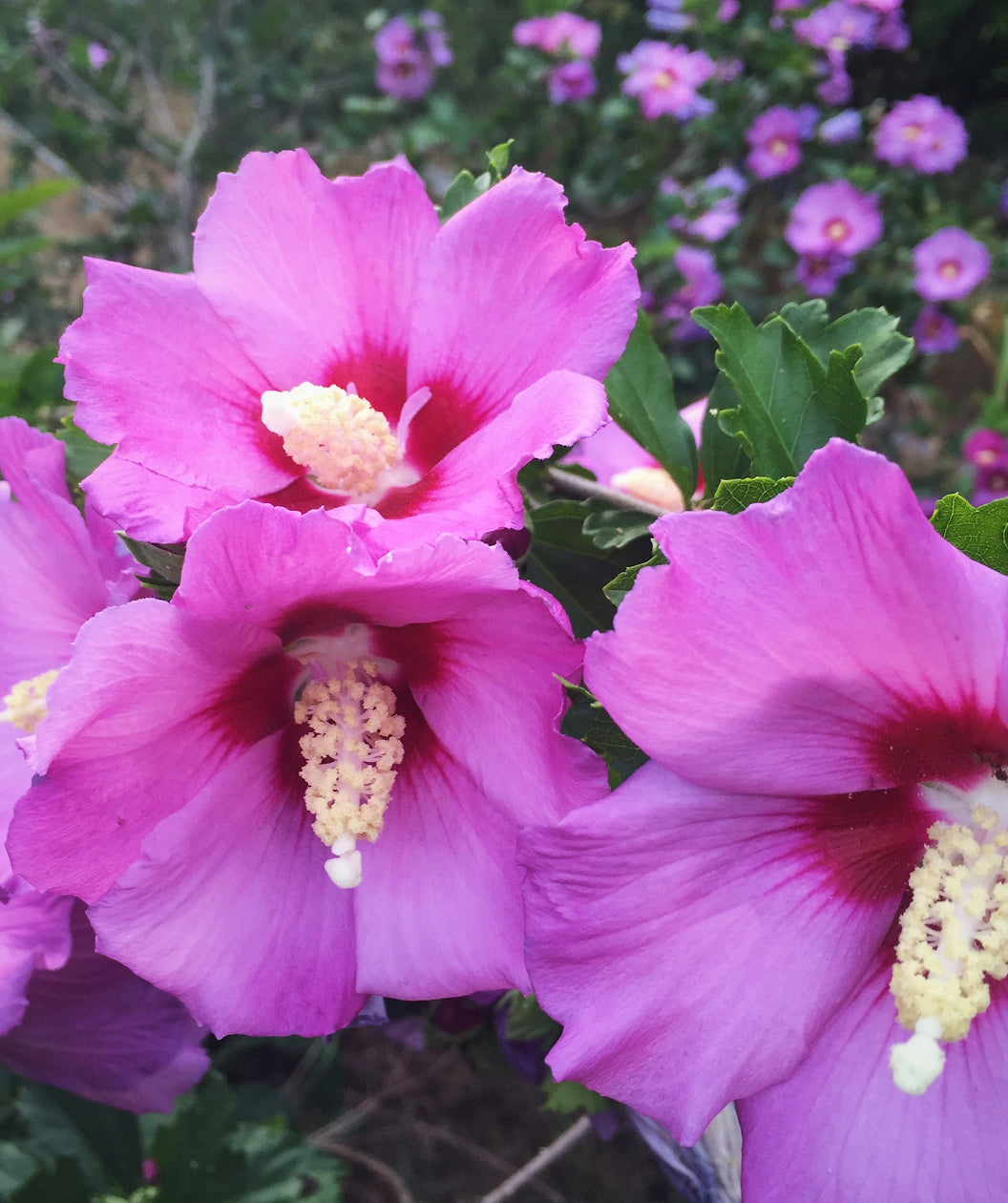

AN OASIS OF PINK FLOWERS BLOOMING FOR MANY SEASONS
FEATURES:
- Large, four-inch rosy-pink flowers bloom spring into fall
- Chartreuse green foliage illuminates throughout your landscape
- Large blooms attract hummingbirds and butterflies
- Easy to grow and extremely hardy
- Tolerant of drought, heat, humidity, and pests
- Hand Selected, Fresh from the Grower
- Ships in a plant-safe designed box
Growth Facts
- Hardiness Zone: 5-8
- Mature Height: 9-10' tall
- Mature Width: 4-6' wide
- Exposure: Full Sun
- Spacing: 6-8' apart
AN OASIS OF PINK FLOWERS BLOOMING FOR MANY SEASONS
FEATURES:
- Large, four-inch rosy-pink flowers bloom spring into fall
- Chartreuse green foliage illuminates throughout your landscape
- Large blooms attract hummingbirds and butterflies
- Easy to grow and extremely hardy
- Tolerant of drought, heat, humidity, and pests
- Hand Selected, Fresh from the Grower
- Ships in a plant-safe designed box
Growth Facts
- Hardiness Zone: 5-8
- Mature Height: 9-10' tall
- Mature Width: 4-6' wide
- Exposure: Full Sun
- Spacing: 6-8' apart
Why plant Aphrodite Rose of Sharon Shrub Form?
Aloha! An Aphrodite Rose of Sharon in your entryway garden or foundation beds will give off a tropical vibe while welcoming guests to your home. Its voluptuous, pink, five-inch blossoms, each marked with a deeper pink bullseye, brings to mind palm trees and hula dancers, but don’t be fooled. Although the exotic blooms make it look like a tender plant, this sturdy performer is totally cold-hardy. You can rely on it to give you a fresh splash of color through the hottest days AND to endure winter temperatures down to -20ºF! This is one of our favorite selections.
Rose of Sharon has been enjoyed by gardeners for centuries, but one thing that has always been a bit troublesome about it is the way it reseeds. Horticulturists at the U.S. National Arboretum set out to change that in the early 1970s by breeding some new varieties. They treated the seedlings with colchicine, a natural substance that causes some plants to become triploids. Triploids have extra chromosomes, and they generally flower for extended periods, have larger flowers and fruit, and make little or no seed. Seedless watermelon, for example, is a triploid. The first Rose of Sharon triploid was named after the Roman goddess of the hunt, Diana, so the National Arboretum researchers continued that theme and named this new plant after the Greek goddess of love, Aphrodite.
How to use Aphrodite Rose of Sharon Shrub Form in the landscape?
Aphrodite Rose of Sharon is perfect for those neatly manicured beds and borders around your home in need of a special accent. You could plant them as a hedge for flowering privacy or in a container for a showy welcome to your home!
Planting Zones
Hardiness Zone: 5-8
How To Plant Aphrodite Rose of Sharon Shrub Form
The Aphrodite Rose of Sharon is easy and satisfying to grow even for novice gardeners. Choose a site with all-day sun for your plant. Aphrodite will also grow in part shade, but will put out fewer blooms there. This plant likes light soils and needs good drainage, but it doesn’t want to dry out completely.
How To Water
You should be watering your Aphrodite Rose deeply every week. Once established, you can get away with watering less than usual as they become rather drought tolerant.
How To Fertilize
In the spring, we recommend using our Elements Starter Plant Food in granular form by spreading it around in the soil of the plant.
How To Prune
Prune hard each year in early spring to control size, does not affect flowering.




